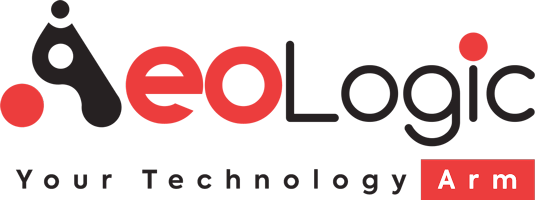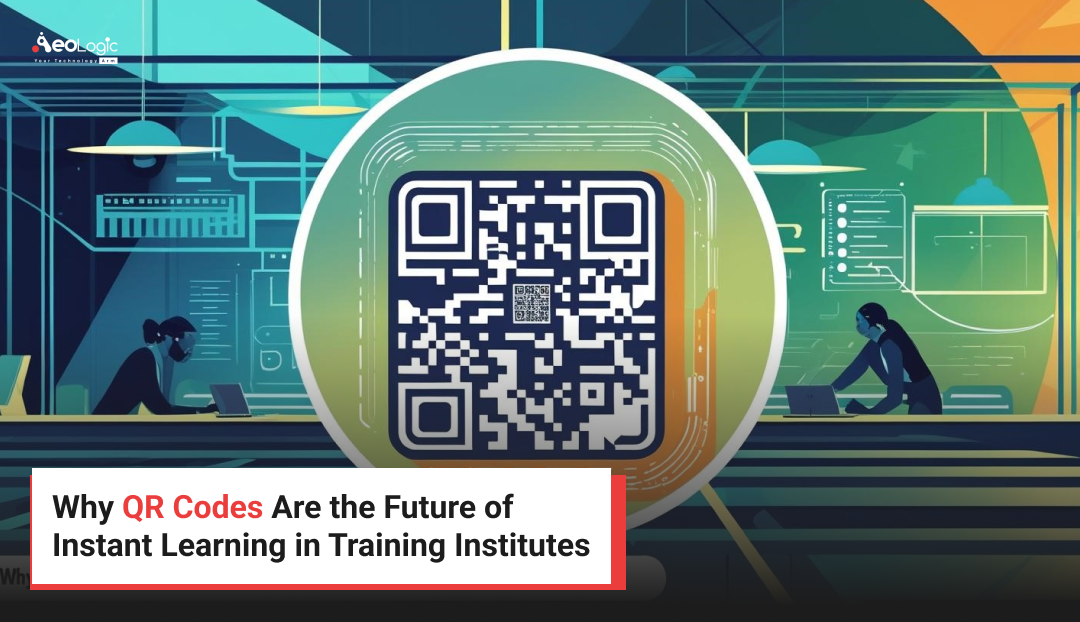Learning as Fast as You Can Scan
Imagine this: Someone new walks into a workshop, scans a QR code on the wall, and gets right away to a small learning thing made just for that day. No need to download anything, sign up or log in. It’s quick and to the point. QR Learning Module makes possible it
This is how things are going now in training. As tech changes how we teach, QR codes are becoming big. With a QR Learning Module scan, people learning can get to all kinds of stuff like videos, guides, quizzes, and surveys that fit what they’re learning right then.
Why is this cool? People learning things now want things fast and easy. Old ways like books and lectures can be slow. But QR codes on phones give info when and where people need it.
For example, say you’re learning about forklift safety. Instead of big books, the teacher puts up QR codes at each spot. Each code goes to a short video, then a small quiz to help you learn. It’s hands-on and useful for quick learning, where short bits of info work better than long talks.
Besides keeping people interested, QR codes also give info right away. Trainers can see who looked at what, when, and how well they did. This helps make learning fit each person, tests are better, and decisions are easier.
This blog will talk about how training places use things like QR codes, phone quizzes, and short lessons to make learning better for everyone. If you teach or train people, it’s time to see how scanning a code can make learning smarter.
Why QR Learning Module Are Great
Quick Access:
It’s annoying when you have to sign in or deal with old stuff when you’re trying to learn. QR codes fix that—just scan and you’re in. No usernames, passwords, or big downloads. The content pops up on your phone right away.
Imagine a new worker scanning a QR code by QR Learning Module machine. A video appears instantly, showing safety rules and how to use it. That’s way better than just reading a manual!
Short Lessons:
Microlearning for Today’s Attention Spans Long training sessions? Forget about it. People want learning that’s fast and gets straight to the point. That’s where short lessons shine. They come in 3–5 minute chunks that help reinforce key skills without being too much.
Actually, a 2022 eLearning Industry report showed that microlearning can improve how well people remember stuff by up to 80%. Whether it’s a reminder on how to deal with customers or a quick how-to on putting something together, shorter is better.
Plus, when these lessons are easy to get to with QR codes, people can check them out again whenever they need to. This helps build skills and makes them more confident at work.
Mobile Quizzes and Feedback: Know Now, Not Later
Don’t wait to see if your training stuck. Mobile quizzes in QR learning module give you quick feedback—from and for the learner, right away.
Think of it: after a bit on safety at work, a quiz pops up. It helps remember what you learned and shows trainers what needs more work. A quick feedback form also tells you how the content landed. Mobile quizzes and fast feedback help to: Make key points stick Keep learners on track Show instructors what’s missing, fast Also, trainees like quizzes on their phones more than old paper tests.
Plan Better with Up-to-the-Minute
Data Each scan gives you information like who checked out the module, the time they checked out the module ,and how often they did it. What are the quiz scores looking like? Which topic got the most attention?
QR learning module tools give trainers easy access to this data. With analytics dashboards, they can:
Find out what content people like and what they don’t Change how they present information based on what people do See how people are doing over time in teams, or groups.
Instead of guessing, teachers can use this info to change their programs as needed. This helps make training more useful and relevant.
Go Paperless, Scale Easily, and Work Great on Today’s Campuses
Let’s be real: printing stuff, giving out papers, and changing signs takes forever and costs a lot. If you use QR code learning, updates are quick and digital. Just put up fresh stuff, and when someone scans the code, they see it—no need to reprint anything.
QR codes can grow with you, whether you’re a small training spot or a big school. They also are good for the earth which fits with being eco-friendly. A lot of groups care about that now.
Plus, you can change what people see based on where they are, what area they’re in, or how they’re training. That makes it obvious why QR codes are a must in today’s learning world.
Cool QR Code Win Stories
Auto Training: No More Screw-Ups
A big car company got smart with training by putting QR codes all over their workshops. Each code took you straight to a training vid or a guide. What happened? Safety slip-ups went down by 40%, and the mechanics felt way more sure of themselves at work.
Healthcare Training: Learning on the Go
In Singapore, a big hospital started using QR codes in break rooms and patient areas. Nurses could scan for quick lessons on stuff like hygiene, handling patients, and doing paperwork right. In half a year, paperwork accuracy went up 30%, and the staff said the training was way better.
Trade Schools: Getting Real Feedback
Some trade schools in India started sticking QR codes on doors and equipment. Students scanned to get quizzes or give anonymous feedback. Compared to old paper forms, they got 55% more responses from students—and that info helped them teach better, right away.
These aren’t just nice stories. They show how QR codes are changing how we train people making it easier to measure results and more helpful.
Difficulties Facing Educational Institutions in the Current Environment
Why a smarter, faster learning system is necessary—and how QR codes can facilitate one.
In an environment where information changes every day and learners want information right now, training institutions often find themselves behind the curve. Training institutions, whether they are training for technical trades, health care, manufacturing, or upskilling for corporations, are experiencing a new range of challenges that old methods won’t solve. To better understand these challenges, let us dive into them:
Information Overwhelm vs. Real-Time Retrieval
Modern learners experience unrivaled amounts of content being presented to them throughout training— videos, manuals, lectures, tests. The issue? Most of it is gone shortly after the training is completed. Without quick access to just-in-time reinforcement, learners will be unable to use their training knowledge when they need it most.
Example: The mechanic in training may forget a torque spec or safety protocol several days after classroom training, but may need it urgently during the next repair task.
Key issue: The absence of contextual refreshers. No immediate access to bite-sized information.
Accessibility Issues During Hands-On Learning
Learning occurs outside of a classroom context. In fact, it is meaningful and valuable learning that happens through real-life experiences. However, traditional learning processes do not provide real-time, learner support at the point of need.
Example: A nursing student on a hospital rotation, cannot stop and look for their manual in the middle of their shift.
Root cause: Training content is locked behind desktop computers, LMS portals and unreliable manuals; none of which are accessible during hands-on and on-the-job fast-paced activities.
A Boring, One Size Fits All Training Format
Text-heavy manuals, lengthy classroom presentations and slide decks have no chance against the modern learner, of whom 92% get their information from digital formats. Organizations do struggle to get their learners engaged, especially when they are used to being nave and distracted by all the interactivity and engagement under the premise of information.
Example: Imagine a Gen Z student in a vocational training center who is being asked to watch a two-hour video for a safety training, they may zone out – but they could have engaged much, much more with a 1-minute explainer video accessed by a QR code. The common denominator is static training methods that do not align with content consumption habits today.
The Expense of Updating and Delivering Training
Time, money, and staff bandwidth and time are consumed any time one needs to update printed materials, train the trainers, revise online materials, or provide new learning software at multiple locations.
Example: A national chain of trade schools that needed to update the electrical safety content for their schools needed to manually reprint thousands of pages and manually re-train their instructors. Root issue: Rigid and centralized learning models that are resource-heavy and inflexible.
Lack of Personalization in Learning Journeys
In traditional training systems, every learner moves through the learning at the same pace, the same failures (module), and the same testing (exam)—regardless of skill level or learning style. Learners who don’t follow the “set course” disengage from training and learning and, in some cases, completely lose the learning opportunity.
Example: A fast learner is bored and feels like they are held back, and a ‘slow’ learner feels a sense of panic because they are not being supported.
Root issue: No real time instructional feedback, limited tracking, and rigid course design.
Challenge of Achieving Consistency in Training Across Locations
Training organizations with multiple centers (or franchises) can find it complicated to provide uniform content and standards across each location, which causes horrible logistics for the organization.
Take, for example, a chain of automotive institutes. The training modules taught in Delhi, could be a different version from the one being taught in Pune, because the training content and modules have not been updated in the same timeframe.
Basic problem: No centralized, instant-access system to implement at scale.
Delay or Lack of Feedback Loop
Most traditional approaches do not provide real-time data to the trainer or learner. By the time information is collected (via tests, surveys, or trainer evaluations), it’s too late to influence learning pathways.
For example, the learner continues to make a safety error for weeks before being flagged – simply because the trainer did not have visibility or access to a tracking method.
A primary issue: There is no real-time assessment, no progress data analytics, and no feedback loop.
Paper-Based Processes Are Old
Printed manuals, classroom hangouts, laminated instructions all are going to quickly fall out of date and are very difficult to update. they also don’t support interactive content like video, animations, or AR.
Example: A laminated safety checklist from 2020 might still be current—but that is probablydicey-but it still is in use because highlight because they don’t know the alternative.
Main issue: Paper isn’t scalable, searchable or interesting in 2022
Weak Alignment with Mobile Learning Trends
Most learners today access mobile devices every day—however training is typically not optimized for mobile. Institutions failing to integrate mobile-first training miss out on a big opportunity for engagement and ease of access.
Example: Learners will scan a QR code from their phone and watch a short video before logging in to an overly complicated LMS from a desktop.
Root problem: Legacy systems are not designed for mobile learning.
Resistance to Change and Digital Adoption
It’s common for staff, trainers or management to resist adopting new technologies even if they’re trying to train staff, simply because of a lack of training or sometimes a fear of using something that seems complex. This kind of resistance will continue to slow down necessary transformation.
Example: Trainers with traditional training methods may avoid using new digital tools unless they are so simple they’re impossible to avoid.
Root cause: Adoption is often impeded by complexity and lack of intuition.
With Aeologic Technologies as your trusted tech solution partner, you can leverage cutting edge AI innovations to transform your contact center operations. The gen AI financial services are just beyond our imagination and have a brighter future than today. This not only improves the way of contact services but also introduces an innovation that is going to enhance the financial sector for a long time.

With a strong foundation in software and a growing expertise in AI, I specialize in building smart, scalable solutions that drive digital transformation






